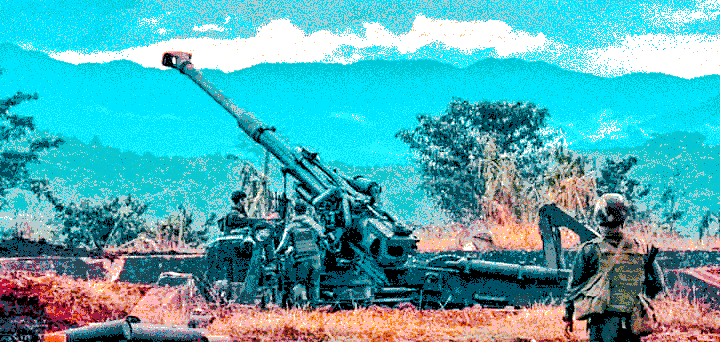Myanmar Spring Chronicle – December 11
MoeMaKa, December 12, 2023
Temporary Pause in the Battle Ring: Myanmar’s Fragile Ceasefire Talks
A month and 17 days since the initiation of coordinated attacks by the 3 Northern Brotherhood Alliances in the northern part of Shan State on October 27, a surprising piece of news emerged. According to a press release by the military council’s spokesperson on December 11, representatives of the 3 alliances and their military adversaries from the Min Aung Hlaing-led military council convened in Kunming, China, to discuss peace. This revelation was later confirmed by China’s Foreign Ministry spokesperson, Mao Ning.
This political development is reminiscent of spectators cheering for one side in a boxing match, only to be disappointed when the referee calls for a break just as their favored fighter is poised to strike. However, Myanmar’s current civil war is no mere sporting event; it’s a competition where human lives, homes, social structures, and families are at stake. The conflict involves attacks on towns and villages, looting, arson, and the forced recruitment of individuals into the war effort.
The meeting in Kunming is not a display of sportsmanship or the celebration of success. It revolves around the interests of various organizations, primarily those based on ethnic groups and groups in power, which are often touted as national interests.
Lieutenant General Yar Pyae, the current chairman of the National Unity and Peace Restoration Coordination Committee (NUPRCC) of the Military Council, led the delegation during the Kunming meeting with ethnic armed groups. Notably, details about attendees from both sides were not disclosed in the press releases.
Speculation surrounds the timing of this development, given that fighting persisted in the Kokang region and North Shan State on the day of the announcement. The specifics of the agreement, including the start date for a ceasefire, remain unclear, leaving room for further clarification in the coming days.
Throughout Myanmar’s history of civil war, armed struggles and dialogue have alternated. In the past two years, however, discussions have been rare, with continuous warfare, attacks, and destruction dominating the landscape. Typically, dialogue occurs for political showmanship when one side is overwhelmingly powerful. Conversely, when the power dynamic balances or shifts, dialogue becomes a possibility once more.
The military council’s recent success in Northern Shan, coupled with being surrounded in certain areas, may explain its return to the negotiation table. Reports suggest that China played a role in facilitating the dialogue, with Myanmar’s Foreign Minister, U Than Swe, seeking Chinese assistance in engaging with the northern armed groups after the Lancang-Mekong regional meeting on December 6.
While the United States has remained silent on recent military developments in Myanmar, influential American newspapers have speculated on the imminent collapse of the military council. The Biden administration’s focus on pressing global issues such as the Palestinian and Ukraine conflicts raises questions about its stance on Myanmar and its alignment with China’s direction.
As conflict rages across Myanmar, the term “peace talks” may offer a glimmer of hope for those affected. However, a careful examination of unfolding events suggests that, rather than a genuine pursuit of peace, the term is shrouded in the veil of “interests.”
Reflecting on a bygone era, the lyrics of a song composed during Myanmar’s earlier civil strife come to mind. The songwriter likened “peace” to honey, urging people to extinguish the flames by carrying pots, both large and small, and even using their hands. In today’s context, the desire for true peace may be as sweet as honey, but the term “peace” veiled by honey risks being perceived as deceitful, opportunistic, and cunning.

